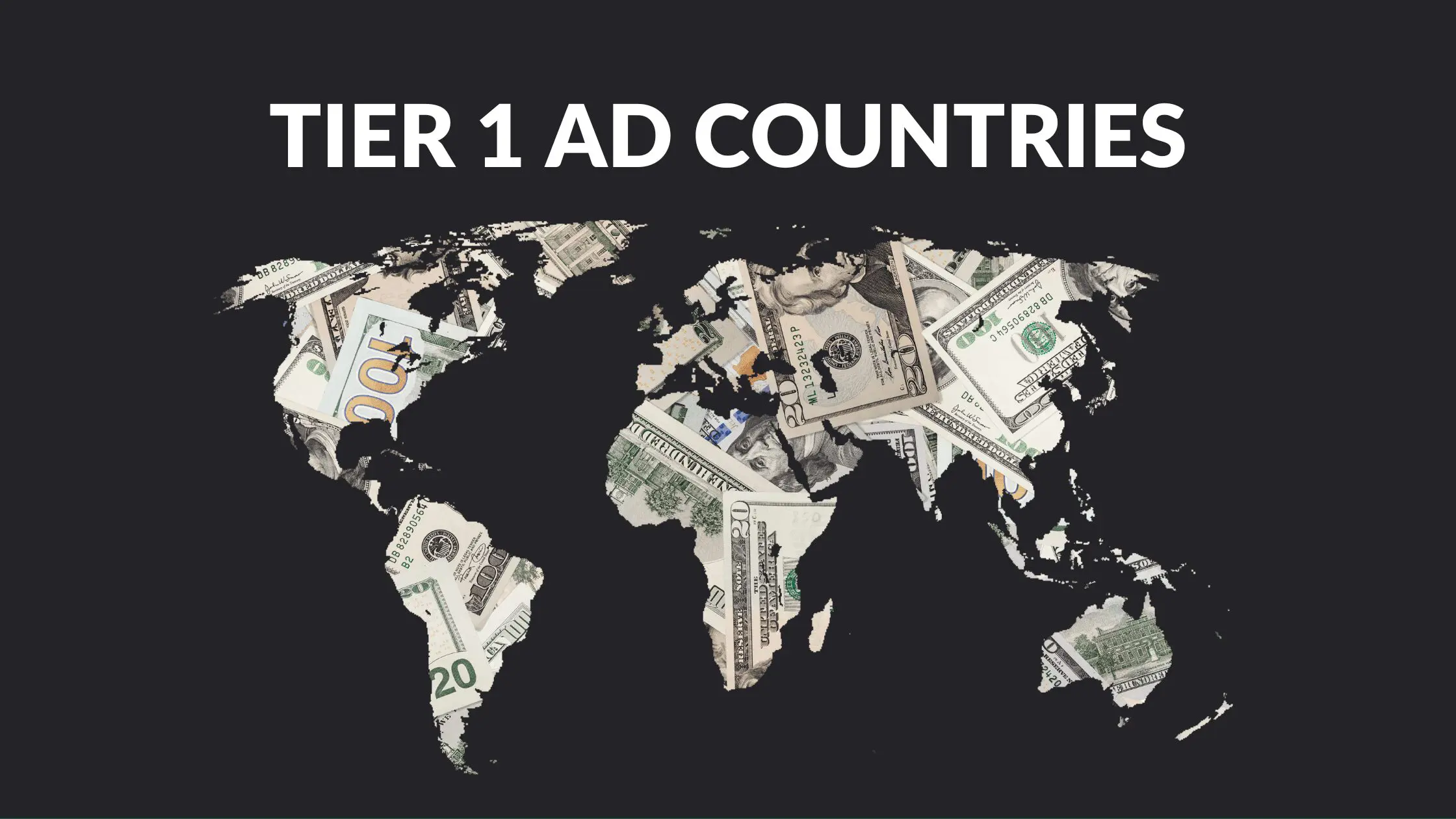Display Ad Earnings Revenue Share

Written by Casey Botticello
Disclosure: Some of the links below are affiliate links, meaning that at no additional cost to you, I will receive a commission if you click through and make a purchase. Read our full affiliate disclosure here.
Display advertising is an essential tool for blog owners to monetize their content and generate revenue. However, choosing the right ad network can be a daunting task, given the sheer number of options available. Two of the most popular ad networks are Mediavine and AdThrive, but other options like Ezoic, Monumetric, SHE Media, and AdSense also exist.
While all of these ad networks offer revenue share programs to publishers, the percentage of revenue that publishers receive can vary significantly. For instance, AdThrive and Mediavine both offer a 75% revenue share, while Ezoic offers up to 90% revenue share. Monumetric and SHE Media also offer competitive revenue share programs, while AdSense offers a more modest revenue share.
In this article, we’ll compare these ad networks’ revenue share programs to help publishers make an informed decision.
Best Display Ad Networks by Revenue Share

1. Mediavine Revenue Share

Mediavine is a popular ad network that offers a revenue share model for publishers. The revenue share varies based on the type of ad and the partnership agreement, but Mediavine offers at least a 75% revenue share to publishers for display ads.
Revenue shares will increase from the base 75% based on the following criteria:
- If your site produces 5 million ad impressions over the previous 30 days, your revenue share increases to 80%.
- If your site produces 10 million ad impressions over the previous 30 days, your revenue share increases to 82.5%.
- If your site produces 15 million ad impressions over the previous 30 days, your revenue share increases to 85%.
- With Mediavine’s loyalty bonus, your revenue share on display and video ads has the potential to reach 90%.
Pros of Mediavine
One of the main advantages of Mediavine is its high revenue share rate. Compared to other ad networks like AdSense, which typically offer a 68% revenue share, Mediavine’s 75% revenue share can result in significantly higher earnings for publishers.
In addition to its revenue share, Mediavine offers a number of other benefits to publishers. These include:
- Advanced ad optimization technology that maximizes earnings while minimizing user experience impact.
- A minimum payout threshold of $25, which is lower than many other ad networks.
- A dedicated support team that provides personalized assistance to publishers.
Another nice feature from Mediavine is its loyalty bonus. For each full year you remain a Mediavine publisher, you receive and additional 1% bonus in revenue share (capped at 5% for 5 years).
So even if your site never reaches the higher tiers of ad impressions, you will begin accruing the loyalty bonus after your first year on Mediavine.
Cons of Mediavine
While Mediavine offers a number of benefits to publishers, there are also some potential drawbacks to consider.
One of the main concerns with Mediavine is its strict eligibility requirements. In order to join Mediavine, publishers must meet a number of criteria, including a minimum of 50,000 monthly sessions, compliance with Mediavine’s content policies, and a website that meets Mediavine’s technical requirements.
2. Raptive (AdThrive)

Raptive (formerly AdThrive) is a premium ad management network that offers publishers access to high-paying ad campaigns. It was founded in 2013 and has since grown to become one of the most popular ad networks for publishers. Raptive shares 75% of the ad revenue with publishers, which is one of the highest revenue shares in the industry.
Pros of Raptive
One of the main advantages of Raptive is its high revenue share. Publishers can earn a significant amount of money from their ad campaigns, which can help them monetize their websites effectively. Raptive also offers a dedicated account manager who can help publishers optimize their ad campaigns for maximum revenue.
Another advantage of Raptive is its focus on premium ad campaigns. Raptive works with top brands and advertisers to ensure that publishers get access to high-paying ad campaigns. This can help publishers earn more money from their ad campaigns and increase their revenue over time.
Cons of Raptive
One of the main drawbacks of Raptive is its strict traffic requirements. Publishers need to have at least 100,000 page views per month to be eligible for Raptive. This can be a barrier for smaller publishers who are just starting and don’t have a large audience yet.
Another drawback of Raptive is its exclusivity. Raptive only works with a select group of publishers, which means that not everyone can join the network. This can be frustrating for publishers who want to monetize their websites but are not eligible for Raptive.
3. Monumetric

Monumetric is a managed ad platform that offers a revenue share program to publishers. The company claims to offer a higher revenue share than other ad networks, which can be attractive to publishers looking to maximize their earnings.
Pros of Monumetric
One of the main advantages of Monumetric is its high revenue share. According to the company’s website, publishers can earn up to 70% of the revenue generated by their ads. This is significantly higher than the 50-60% offered by other ad networks such as AdSense and Ezoic.
Another benefit of Monumetric is its managed ad platform. This means that the company handles all aspects of ad optimization, including ad placement, ad sizes, and ad networks. This can save publishers time and effort, as they don’t have to worry about managing their own ads.
Cons of Monumetric
One potential downside of Monumetric is its strict eligibility requirements. Publishers must have at least 10,000 monthly pageviews to join the platform, which can be a barrier for smaller websites. Additionally, Monumetric charges a $99 setup fee, which can be a deterrent for some publishers.
Another potential drawback of Monumetric is its limited ad formats. The company primarily offers display ads, which may not be suitable for all types of websites. Publishers looking to monetize their websites with other types of ads, such as video or native ads, may need to look elsewhere.
4. SHE Media

SHE Media is a popular ad network that focuses on women’s lifestyle content. It offers a revenue share of 60% to the publisher and 40% to the network. This revenue share is slightly lower than some of its competitors, such as AdThrive and Mediavine, which offer a 70% revenue share to publishers.
Pros of SHE Media
One of the main advantages of using SHE Media is that it is a well-established network that has been around for over a decade. It has a large pool of advertisers and offers a variety of ad formats, including display ads, native ads, and sponsored content. This means that publishers can monetize their content in a variety of ways and potentially earn more revenue.
Another advantage of SHE Media is that it has a strong focus on women’s lifestyle content. This means that publishers who produce content in this niche may have a better chance of getting accepted into the network and earning higher revenue.
Cons of SHE Media
One of the main drawbacks of using SHE Media is its lower revenue share compared to some of its competitors. Publishers who are looking to maximize their earnings may be better off using a network such as AdThrive or Mediavine, which offer a higher revenue share.
Another potential drawback of SHE Media is that it may not be the best fit for all publishers. Its focus on women’s lifestyle content means that publishers who produce content in other niches may not be accepted into the network or may not earn as much revenue.
5. Ezoic

Ezoic is an AI-based ad mediation platform that offers fair and transparent revenue share to publishers. The platform boasts of a unique ad testing technology that optimizes ad placement, size, and type to increase ad revenue for publishers. Ezoic offers a 90% revenue share to publishers, which is higher than most other ad networks.
Pros of Ezoic
One of the biggest advantages of using Ezoic is its AI-based ad testing technology that helps publishers optimize their ad revenue. The platform offers a range of ad formats, including display ads, in-feed ads, and native ads, among others. Ezoic also offers a range of tools to help publishers improve their website’s user experience, including site speed optimization, mobile optimization, and more.
Another advantage of using Ezoic is its fair and transparent revenue share policy. The platform offers a 90% revenue share to publishers, which is higher than most other ad networks. Ezoic also offers a range of payment options, including PayPal, wire transfer, and more.
Cons of Ezoic
One of the drawbacks of using Ezoic is that it can take some time to set up and optimize the platform. Publishers need to go through a rigorous onboarding process, which includes a website audit, before they can start using Ezoic. The platform also requires publishers to install a script on their website, which can be a bit technical for some users.
6. AdSense

AdSense is one of the most popular ad networks, and it offers a revenue share to publishers who display ads on their websites. AdSense offers a 68% revenue shareto most of their publishers.
Pros of AdSense
One of the biggest advantages of AdSense is its ease of use. Setting up AdSense on a website is relatively simple, and publishers can start monetizing their website traffic almost immediately. AdSense also offers a variety of ad formats, including display ads, text ads, and link units, which gives publishers flexibility in how they choose to display ads on their website.
Another advantage of AdSense is its vast pool of advertisers. AdSense is owned by Google, which means that it has access to a large number of advertisers who are willing to pay for ad space. This competition helps to drive up the price of ads, which can result in higher earnings for publishers.
Cons of AdSense
One of the biggest drawbacks of AdSense is its low revenue share. While Google claims that its revenue share is competitive, many publishers have reported that they earn only a small percentage of the revenue generated by their ads. This can be frustrating for publishers who put a lot of effort into creating high-quality content and driving traffic to their website.
Conclusion
When it comes to choosing the best display ad network, there are several factors to consider. Mediavine, Raptive, Ezoic, Monumetric, SHE Media, and AdSense are all popular options, each with its own pros and cons.
Ultimately, if you can get your blog approved for Mediavine or Raptive, these would still be my top recommendations. Mediavine offers one of the highest percentages of revenue share, with publishers eligible to make up to 90% based on their number of ad impressions and the number of years they have been a Mediavine publisher.



